 |
 |
 |
| |
|
Safety and pharmacokinetics of dapivirine and levonorgestrel vaginal rings for multipurpose prevention of HIV and pregnancy
|
| |
| |
Dapivirine and Contraceptive Levels in Dual-Purpose Vaginal Ring: 14-Day Study
HIV Research for Prevention (HIVR4P), October 21-25, 2018, Madrid
Mark Mascolini
Concentrations of the nonnucleoside antiretroviral dapivirine (DPV) and the contraceptive levonorgestrel (LNG) in a 14-day phase 1 trial support further study of this dual-purpose vaginal ring [1]. Study volunteers tolerated the ring well.
Dual antiretroviral/contraceptive vaginal rings offer women sustained drug delivery and require minimal and discreet user action. To begin testing a 90-day DPV/LNG ring, researchers planned this 14-day phase 1 double-blind randomized safety and pharmacokinetic analysis (MTN-030/IPM 041). The ring contained 200 mg of DPV and 320 mg of LNG.
The investigators recruited healthy, HIV-negative, sexually abstinent women at sites in Pittsburgh and Birmingham, Alabama. They randomized participants to the dual DPV/LNG ring or to a 200-mg DPV ring without LNG. Women had a median age of 31 (range 20 to 43), 61% were white, 30% black, and 9% mixed race. Twenty-three of 24 participants could be evaluated, and they completed 99% of study visits.
Sixteen of 23 women (70%) had any adverse event. Of the 43 reported adverse events, 36 (84%) were grade 1 and 7 grade 2. Twenty-four of 36 grade 1 events (67%) were product related, as were 3 of 7 grade 2 events (bacterial vaginosis, headache, uterine spasm). Frequency of grade 2 events did not differ significantly between women using the dual-purpose ring and those using the DPV-only ring.
Median plasma DPV maximum concentration (Cmax) was marginally higher with the dual-purpose ring than with the DPV-only ring: 0.7 and 0.5 ng/mL, P = 0.05). DPV plasma area under the concentration-time curve (AUC) was nonsignificantly higher with the dual-purpose ring (176 and 143 hr*ng/mL, P = 0.10). DPV plasma half-life was twice as long with the dual-purpose ring (50 versus 25 hours). But median half-life in vaginal fluid was 6 hours with both rings.
Median vaginal fluid DPV AUC was significantly higher with the DPV/LNG ring than with the DPV-only ring (40,897 versus 13,309 hr*ng/mg, P = 0.02), while median DPV Cmax was nonsignificantly higher with the two-drug ring (183 versus 107 ng/mg, P = 0.08).
Median plasma LNG AUC was 447 hr*ng/mL, median plasma Cmax 1.6 ng/mL, and median half-life 27 hours. These levels reflect pharmacokinetic findings with other LNG-containing contraceptives.
A 90-day trial of the DPV/LNG ring (MTN-044/IPM 053/CCN019) is under way.
Reference
1. Achilles SL, Hendrix CW, Poloyac SM, et al. Safety and pharmacokinetics of dapivirine and levonorgestrel vaginal rings for multipurpose prevention of HIV and pregnancy. HIV Research for Prevention (HIVR4P), October 21-25, 2018, Madrid. Abstract OA12.02LB.
WEBCAST: http://webcasts.hivr4p.org/console/player/40402?mediaType=slideVideo&&crd_fl=1&ssmsrq=1541350420075&ctms=5000&csmsrq=1267
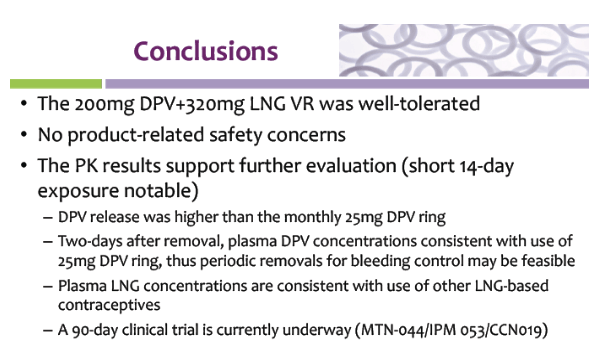
Safety and Pharmacokinetics of Dapivirine and Levonorgestrel Vaginal Rings for Multipurpose Prevention of HIV and Pregnancy (MTN-030/IPM 041)
Reported by Jules Levin
HIVR4P October 21-25, 2018, Madrid
Sharon L. Achilles, MD, PhD
University of Pittsburgh, Magee-Womens Research Institute
Co-authors: Hendrix CW, Poloyac SM, Hoesley CJ, Peda M, Gundacker H, Mensch BS, Marzinke
MA, Devlin B, Nel AM, Piper JM, Johnson S, Chen BA
On behalf of the MTN-030/IPM 041 Protocol Team
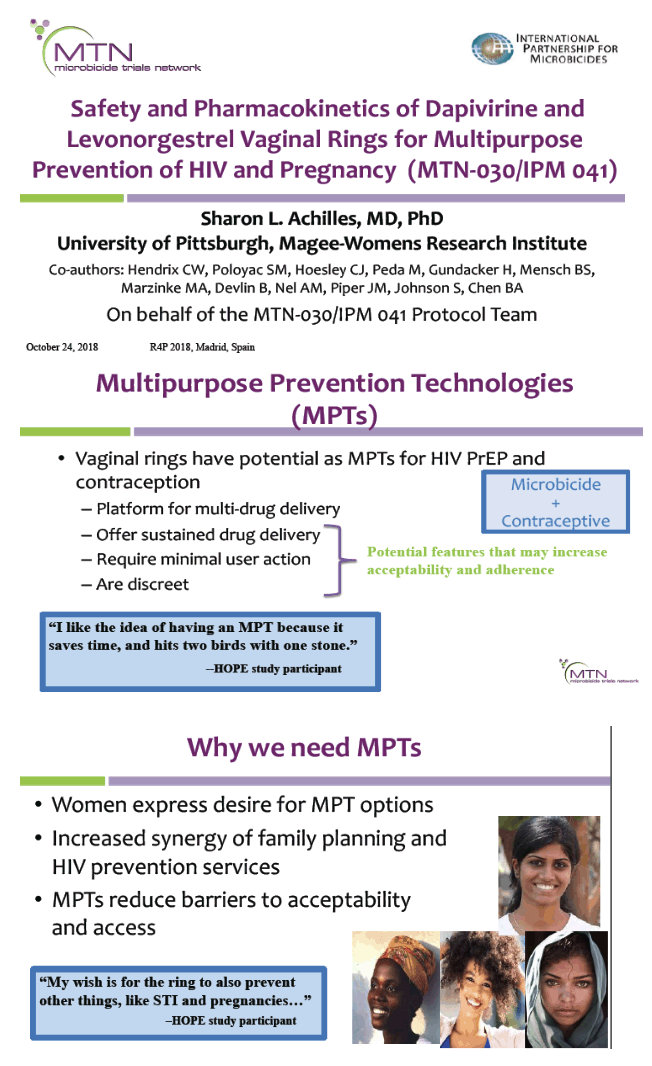

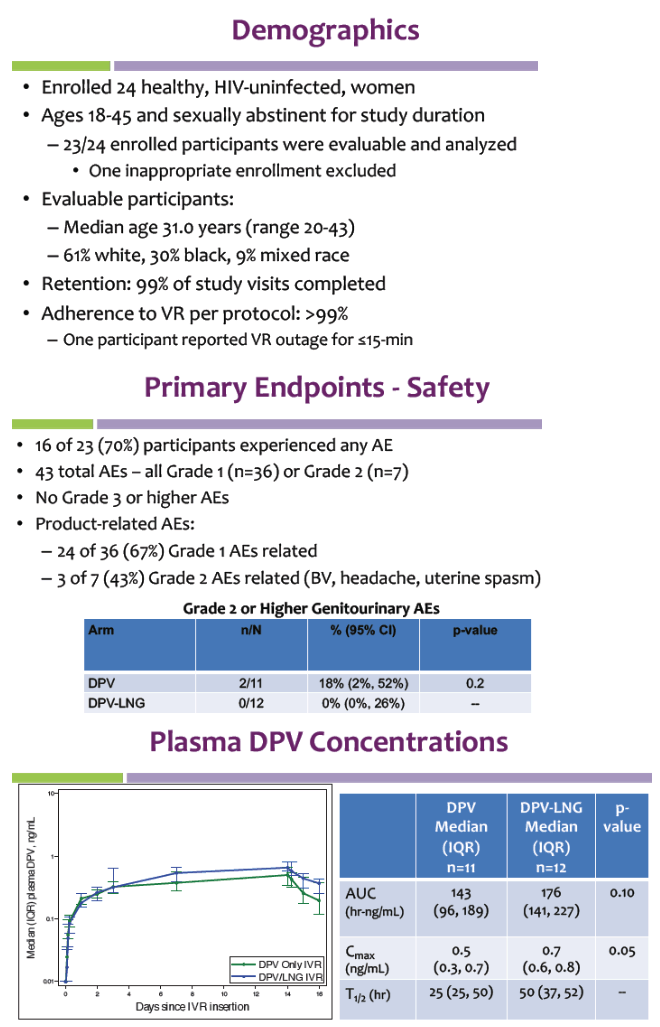
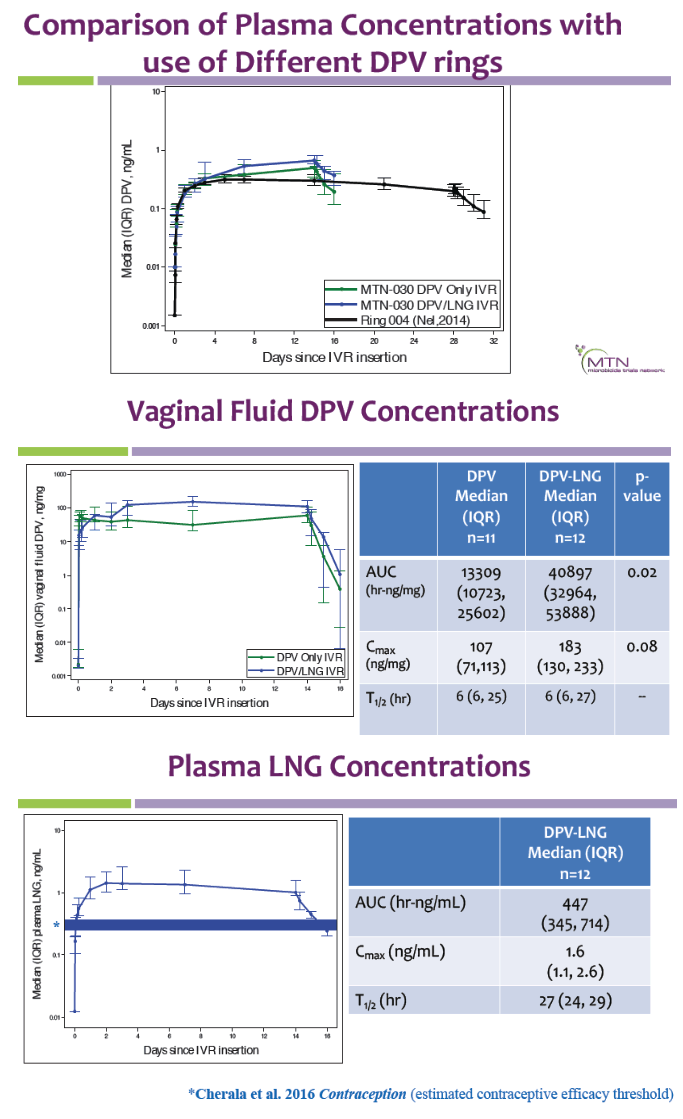
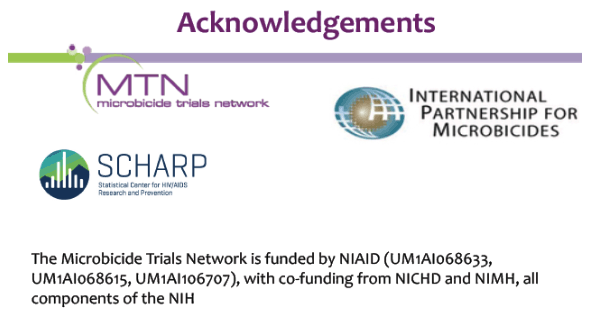
|
| |
|
 |
 |
|
|